These illusions have distorted its landscape and contorted its history….It is a land of the deluded and the self-deluding, of dreamers and con-men.
Richard E. Lingenfelter (University of California Press, 1986)
Cutting through the wilds of the Grapevine Mountains in Death Valley National Park is one of the most arresting drives in the world, the Titus Canyon Road. Found along its 27-mile length are spectacular geologic marvels and vistas, and human imprints in the form of ancient rock art and the more recent ruins of dreams unrealized. As we shall see below, the road owes its existence to a flimflam. Titus Canyon itself is named after Edgar Morris Titus, who entered this rugged wilderness in 1905 but did not come out alive.
The one-way gravel route starts out in Nevada near the town of Beatty, then heads westward crossing into California through the high desert terrain of the Amargosa Valley. It penetrates the foothills of the Grapevine Mountains and begins its ascent through a series of switchbacks, first up the White Pass following through to upper Titanothere Canyon, then cresting at Red Pass before dropping into the defile of Titus Canyon, finally emerging from the canyon down a giant alluvial fan towards its terminus at Scotty’s Castle Road in Death Valley.
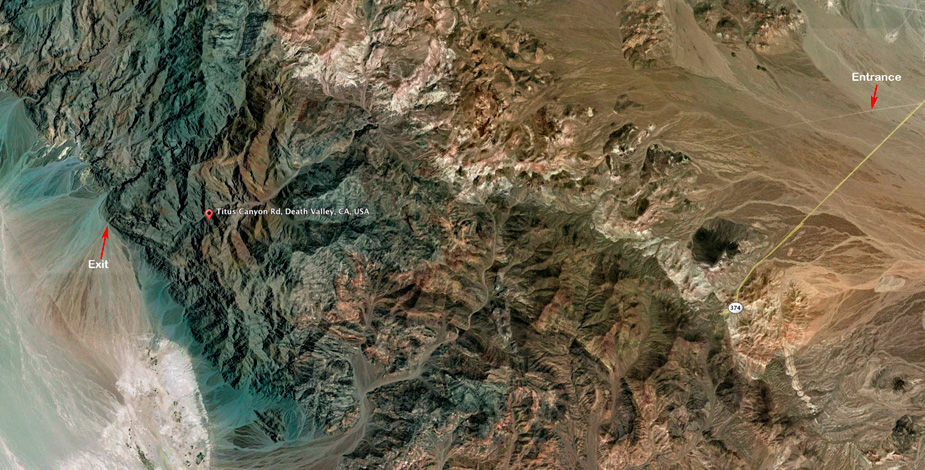
One-way Titus Canyon Road runs east to west
Courtesy: Google Earth
Although this is officially a 4×4 road, in ideal conditions it can be negotiated with a high clearance 2WD. Most visitors to the park are thwarted by its remoteness and forbidding reputation. I wanted to experience the route at daybreak in the hope of catching the first light of the sun on the peaks. Many of the riotously colourful portions of the track are best photographed before the sun gets to them (cloudy days here are rare).
My wife Veena and I set out from Furnace Creek a little after 5 a.m. in the open Jeep Wrangler of our guide Death Valley Jim. 25 miles later we were at the junction marking the beginning of Titus Canyon Road. Although suitably attired, the bitter cold had gotten to my bones by now and my fingers were in severe pain despite two layers of gloves. Our misery was compounded by the rattling of the jeep over the washboarded track.
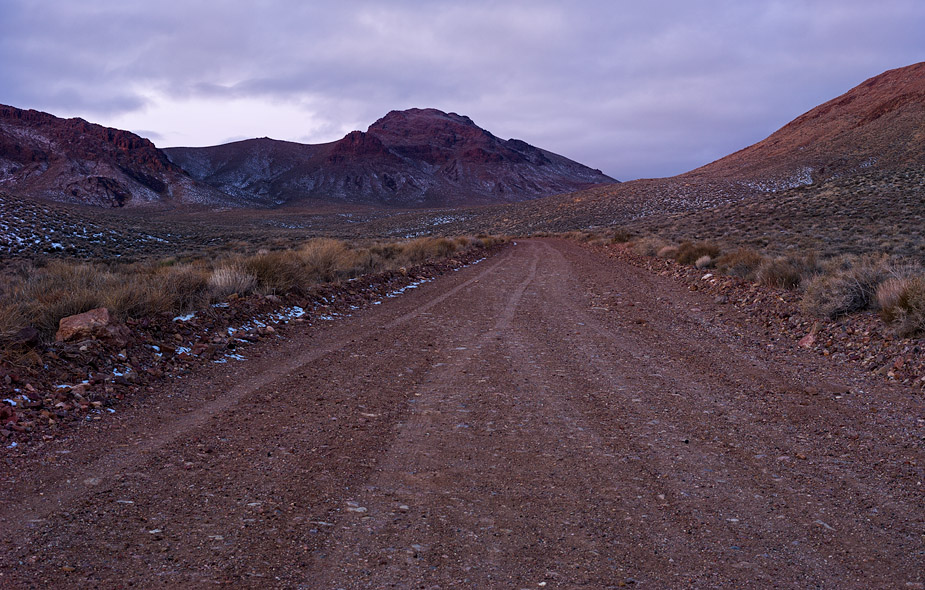
Daybreak on Titus Canyon Road
5D Mark III, Zeiss ZE 50 f/2 MP
We were in the interiors of the Grapevine Mountains approaching the upper Titanothere Canyon when suddenly Nature flipped a switch and the peaks ahead of us caught fire. These are moments when you are overpowered by the ephemeral drama unfolding before you and your physical discomfort melts away. That wake-up alarm at 4 a.m. was worthwhile after all.
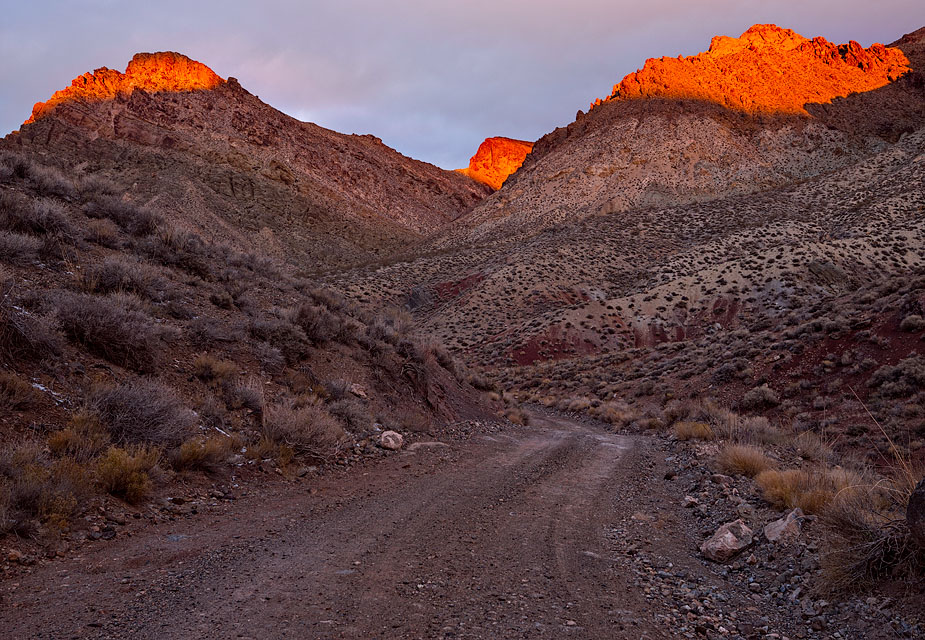
Peaks catch fire near Titanothere Canyon
5D Mark III, TS-E 24L II
The origins of Titus Canyon Road lie in the skulduggery of con artist C.C. Julian. The account is retailed in a marvellous book by Richard Lingenfelter, a professor of physics at the University of California at San Diego. Knowledge of this historical background makes the excursion even more rewarding.
From: Death Valley & The Amargosa – A Land of Illusion by Richard E. Lingenfelter, University of California Press, 1986.
It all started on a blustery spring day in 1924, when a couple of Rhyolite hangers-on, Ben Chambers and Frank Metts, grubstaked by a Tonopah laundryman, Larry Christianson, found the big low-grade lead deposit they called the March Storm at the head of Titus Canyon. Julian boasted she was absolutely virgin ground that nothing had “ever walked, crawled or crept over, but a lizard, a rabbit or a mountain goat” until Chambers laid a pick into her…
…Before Julian could sell his “baby,” he had to dress her up. For starters, he bought a bunch of glowing reports from carefully selected “experts” whom he praised as “the foremost Engineers and Geologists of America.” They obligingly found no ore specimens assaying less than $30 a ton, and the most compliant, Bruce L. Clark, a professor of paleontology at the University fo California, blithely calculated that there was “nearly a million tons of milling ore,” although he later admitted that he knew nothing about mineral deposits. That was close enough, however, for Julian to call her his “hundred million dollar baby.” Then Julian unleashed a whirlwind of activity. On the first of December he started a crew grading a road up Titus Canyon to the mine. It was completed in six days, and more men, supplies, and equipment were sent in. They started two tunnels to open the deposits at depth, put up a boarding house and offices, laid out a townsite called Leadfield, and started a new, much longer road on up the canyon and over the Grapevines to Beatty.
Next stop, the Red Pass.
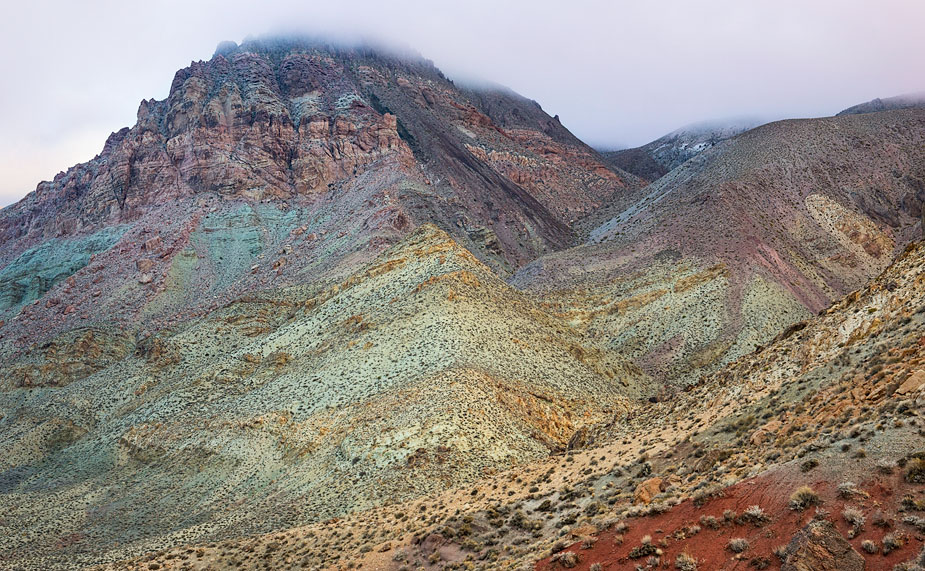
Carnival of colour: view from Red Pass
5D Mark III, Zeiss ZE 50 f/2 MP
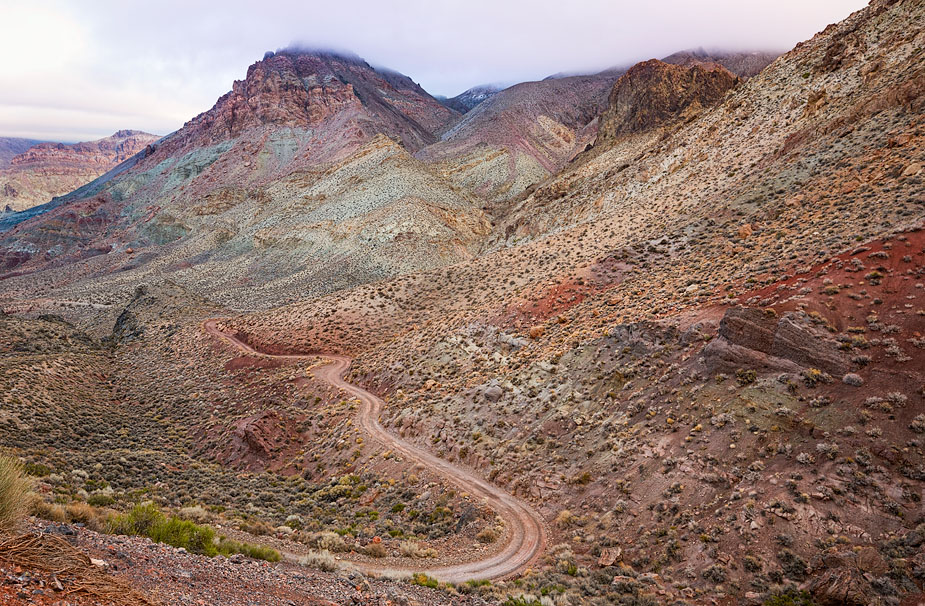
Wide angle view from Red Pass
5D Mark III, TS-E 24L II
After descending the Red Pass we come to the ghost town of Leadfield. Lingenfelter again:
By the end of January, Julian’s baby was ready to “strut her stuff.”…A pipeline was laid from a nearby spring and telephone and telegraph lines were being run from Beatty. Julian had a hundred men at work and another hundred curious and hopeful souls had trekked in. Most just staked out some of the surrounding ground, but a few actually bought lots in Leadfield, opening a general store, a restaurant, and a combination barbershop and bathhouse.
On January 30, [1925], Western Lead opened up on the Los Angeles Stock Exchange. She was “hot stuff” from the start, and Julian boosted her daily…All the ballyhoo finally reached a crescendo on Sunday, March 14, when Julian brought a whole trainload of investors to Leadfield for a free lunch and a firsthand chance to give his baby “the once over.” He’d advertised for weeks a $30,000 extravaganza, a free excursion to quiet the last doubters….”COME UP or SHUT UP,” he taunted, when “THAT CHOO CHOO LEAVES FOR WESTERN LEAD…You don’t have to know anything about a mine to appreciate this ‘Baby’…I’m here to tell you that she’ll knock the eye out of anyone that takes a peek at her.” Out of 1,500 eager souls begging to be taken, 340 got the nod, and by 4:30 Saturday afternoon they were all aboard when the “Julian Special” rolled out of Los Angeles with eleven Pullman sleepers, two diners, and an observation car. Arriving in Beatty, Sunday morning, they piled into 90 private autos, hired by Julian, and joined more than 800 other enthusiasts who had driven down from Tonopah and Goldfield. In a grand caravan they set out on the 22-mile trek to Leadfield over Julian’s new road, opened just a few weeks before at a cost of $40,000 to $60,000. Getting there was an adventure in itself, for Julian’s road was, and still is, a “thriller” with a “hair raising series of corkscrew curves…cut out of the sheer sides of mountains” – “one of the grandest and the most rugged drives on the American Continent,” one enthusiast proclaimed.
With a chorus of squealing brakes and a staccato of dynamite blasts from the surrounding hills, the caravan wound its way to Leadfield. For a few hours the little camp actually looked like a lively boomtown the excursionists expected, as twelve hundred people and a few hundred cars jammed the main street. Julian’s admirers hoisted him on their shoulders, the crowd cheered, and a motion-picture camera rolled to preserve it all for posterity. Then the hungry throng queued up at Ole’s Inn for their free lunch of barbecued turkey, pork, beer, salad and “all the trimmings,” including some hot jazz from a six-piece band….Then they were herded into the tunnels by Jack Salsberry to ogle the jazz baby in all her glory. It was a rousing success. The next day her stock jumped to a new high of $3.30 in record trading on the Los Angeles Stock Exchange.
But it all came crashing down just two days later…
C.C. Julian was quite a character. Among his other achievements was the black eye he dealt Charlie Chaplin in a fistfight.
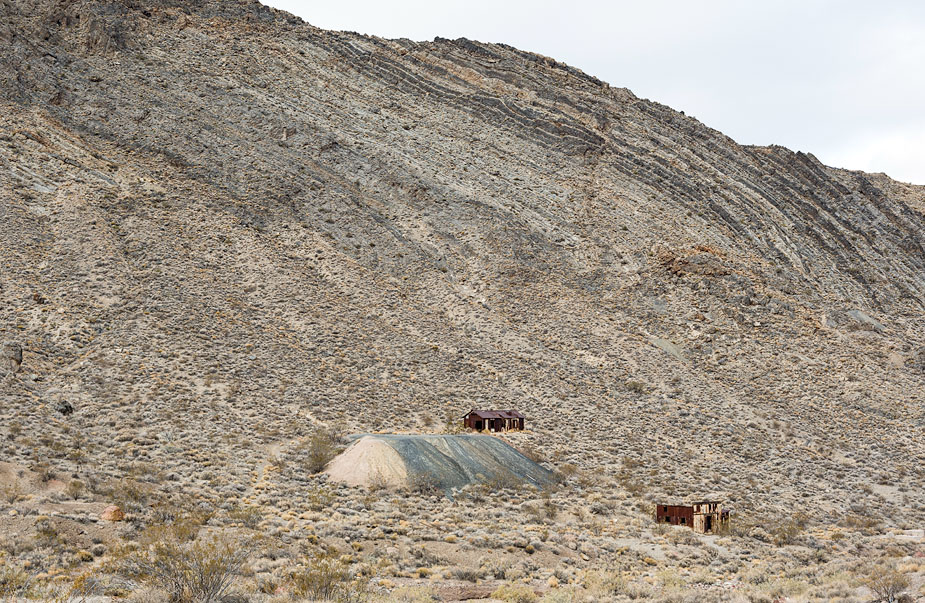
Ruins of the ghost town of Leadfield
5D Mark III, Zeiss ZE 50 f/2 MP
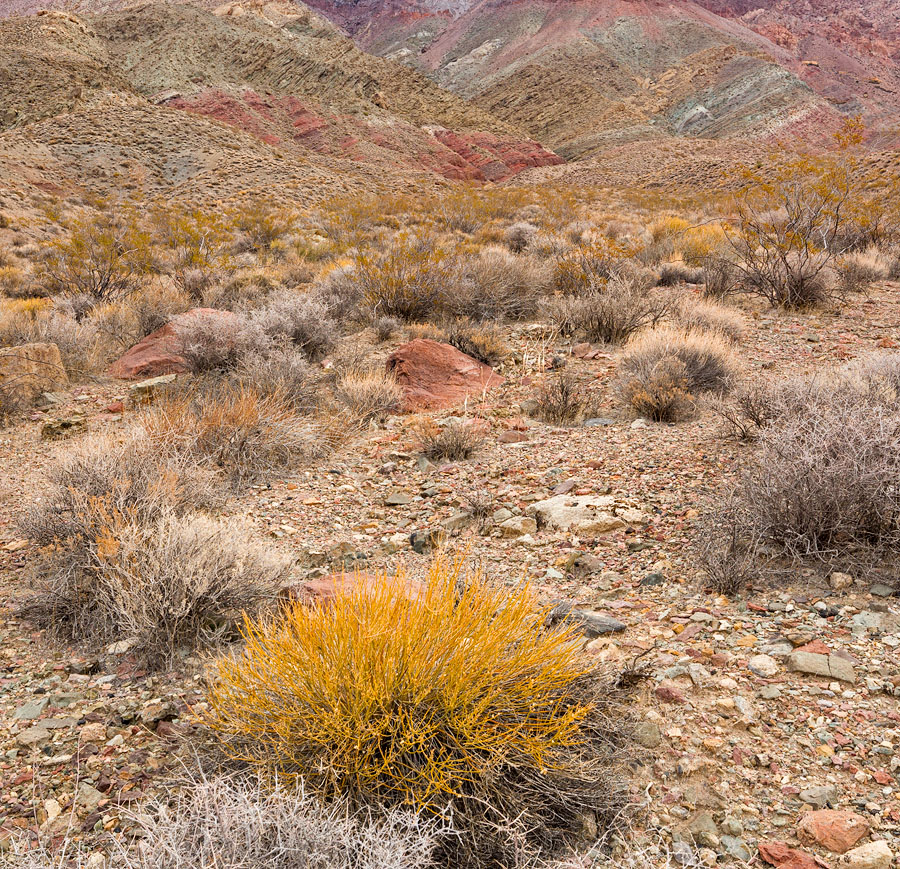
Desert colour
5D Mark III, TS-E 24L II
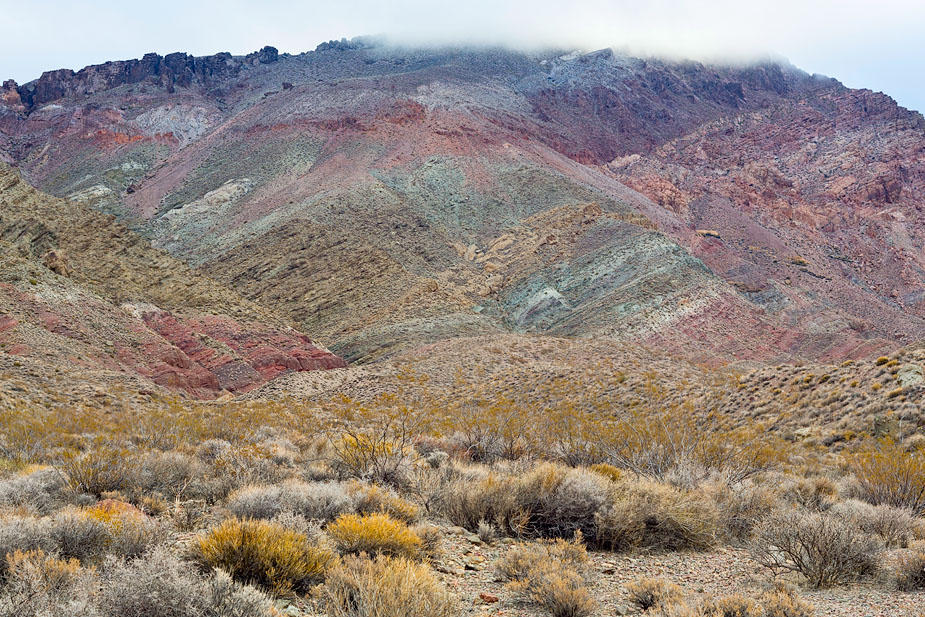
Wonderland
5D Mark III, Zeiss ZE 50 f/2 MP
Not long after Leadfield we encounter Klare Spring, site of ancient petroglyphs that has been subjected to vandalism. From here the track leads into Titus Canyon proper, through its impressive narrows culminating in a vista of Death Valley. The striated and polished walls are profitable photographic subjects and they speak of the canyon’s history in a language understood by geologists.
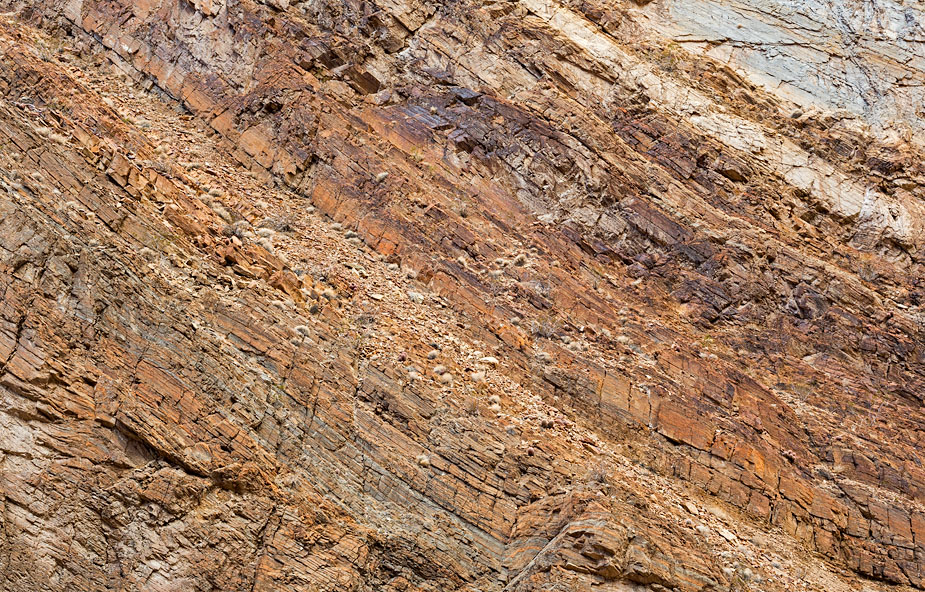
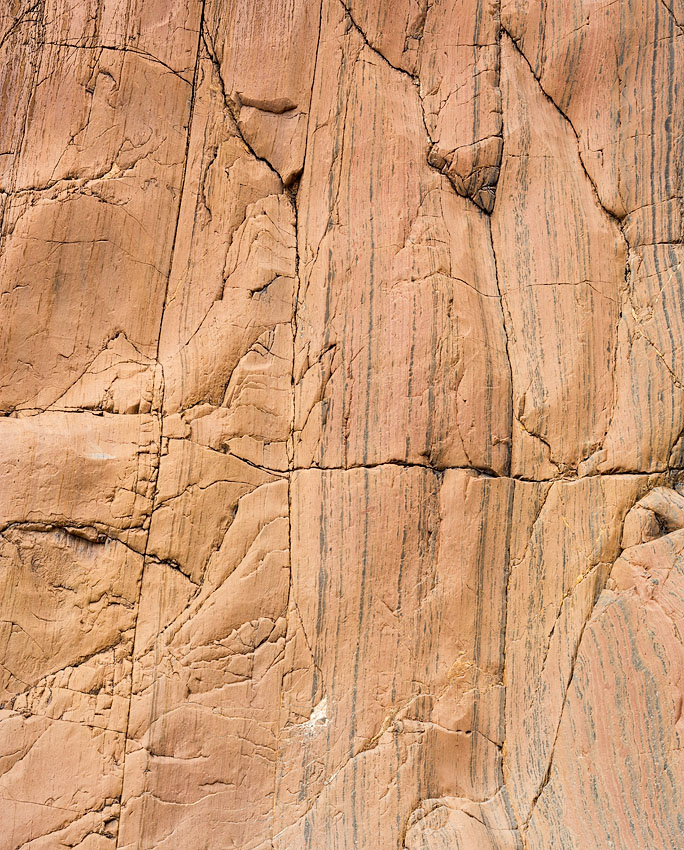
Canyon’s history
5D Mark III, Zeiss ZE 50 f/2 MP
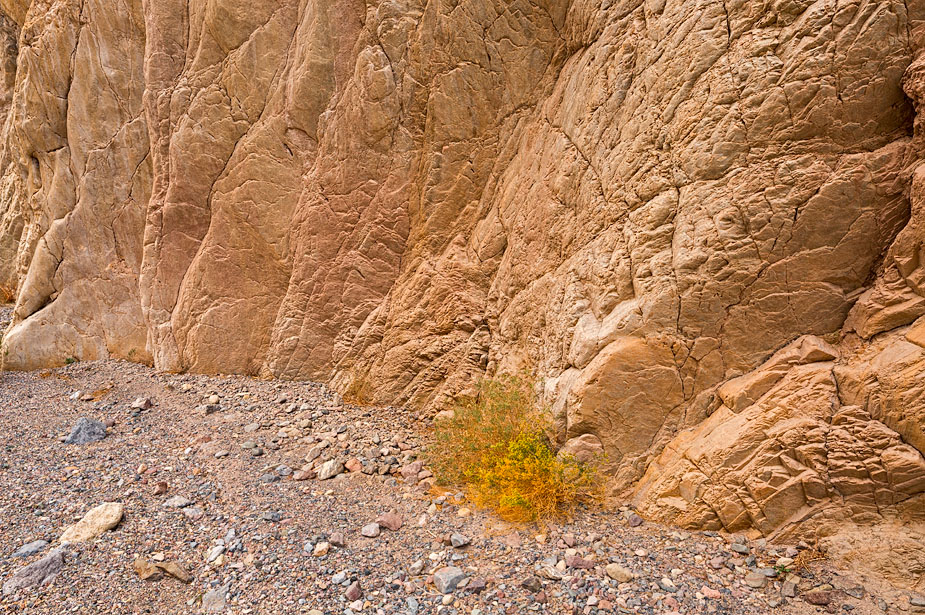
Narrows of Titus Canyon
5D Mark III, TS-E 24L II





The photograph takes my breath away- the sense of space but more, I can feel the silence. The power of light
Stunning footage !!
I am sure this will astound even the regulars at Death Valley.
Your collection will be worthy of a book soon…
Dear Rajan,
Your posts made me curious about Death Valley. While I was searching for it on the Internet, I found this website. It is a photograph album containing pictures taken during a sightseeing trip made from Los Angeles to Death Valley in 1926.
http://www.oac.cdlib.org/findaid/ark:/13030/tf367nb34j/
The third image is as special as it gets. Thank you.
I want to ,,do” this road, but in a comfortable, and warm vehicle. Don´t you have them in California ?
It´s a great place, and the colors man, they are stunning !
It´s a perfect route.